Have you ever wondered, “What is the right bike for me?”
There are many categories of mountain bikes, from hardtail to 200mm travel downhill bikes. If you can only afford one, what should it be? Here is my advise on choosing your ultimate mountain bike.
How difficult should a trail be?
I greatly respect the local riders who ride Captain Ahab (a rough trail in Moab) on hardtails, but it’s slow, a little scary, and beats the crud out of me. If being able to ride your local trails smoothly and efficiently is enough of a challenge, why make it more difficult than necessary? With that in mind, I went looking for the bike that inspires the most confidence on the trails I love to ride, and I found it.
Your local trails might not be as rough, or they could be rougher, steeper, and more slippery. What is the right bike for you? I found that, too!
The ultimate mountain bike for you is, it depends…
Let’s talk about geometry
I discovered the most confidence-inspiring geometry years ago and have extensively researched it. Choosing a Fun and Confidence Inspiring MTB
Seat tube angles
Steep seat tube angles help with ease and confidence while climbing. 76-80 degrees or steeper seat tube angles help you stay centered while climbing.
You used to slide way forward on your saddle and hinge forward at the hips to keep the front wheel from lifting on a steep climb. Now, you can slide forward just a smidge, and you don’t have to hinge nearly as much as you used to.
Headtube angle
Next, you are looking for a 65.5-degree or slacker headtube angle to give you control and confidence while descending. You used to have to get a bike with at least 150mm of suspension travel to get headtube angles that slack.
Now, there are more and more lightweight “down country” bikes with 120mm of travel, slack headtube angles, and steep seat tube angles.
Reach
Additionally, you are looking for a bike with a long enough reach to comfortably hinge at the hips while standing and descending. If your reach is too short, you end up standing too tall, which is not neutral or stable. If your reach is too long, you are always hinged, which isn’t comfortable.
The current semi “standard” is 25mm-30mm increments starting at about 400mm for a size small up to 500-520mm for an XL. These reach measurements are about right, enabling riders to descend and climb well.
Handlebars
Lastly, you don’t want your handlebars too high or too low. Finding the right bar height is easier if you are taller than short.
If you are under 5’6″ and riding a 29er or a mullet, your bars are likely too high to maintain a neutral, balanced body position. See my bike setup video for more on this and how to fix it:
Bike weight
The last thing you should worry about is bike weight unless you weigh less than 140 pounds and/or are racing cross country. This a great article with all the math and science of why saving weight on your bike isn’t that important.
My research and testing
Two years ago, I found a great bike for me, my Canfield Lithium. It is heavy (about 38.4 pounds) and has a lot of travel, 163mm in the rear and 180mm up front.
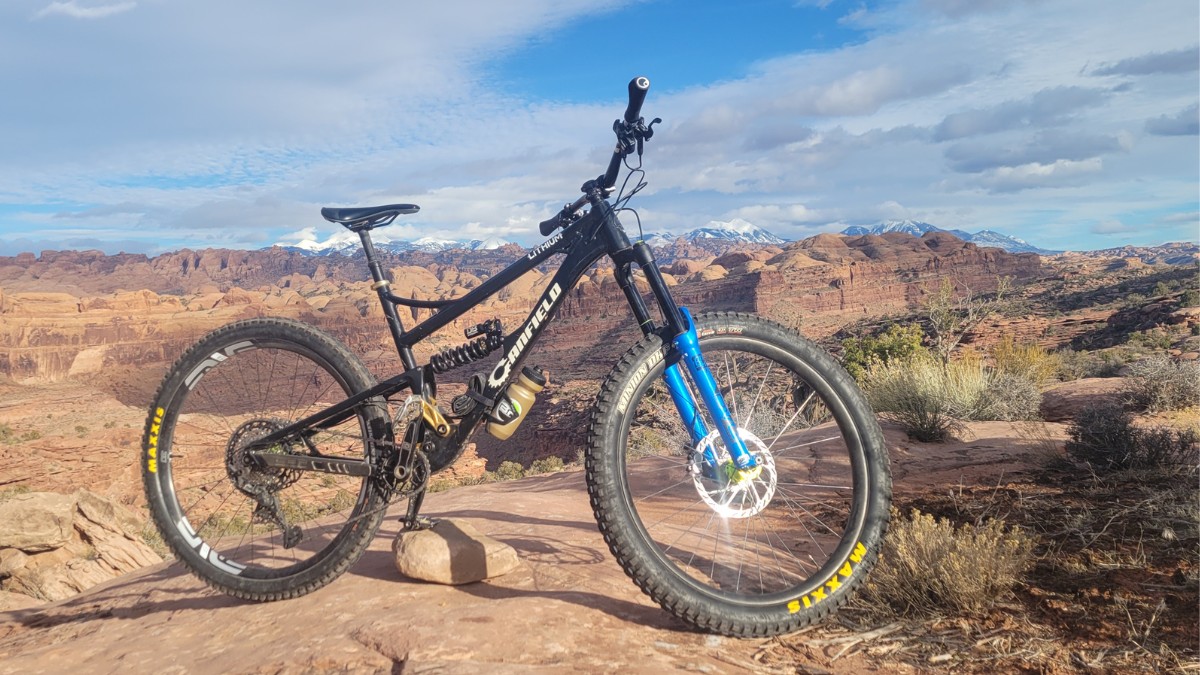
Canfield Lithium in the wild close up
I decided to test it against the best “down-country” bike, the Scott Spark 910. I’m turning 58 next month, and I thought a lighter bike with nearly the same geometry as my Canfield Lithium would be a blast. So, I put the Scott to the test!
(Here is my previous article on the Scott Spark 910)
After scoring a great online deal on the Spark, I patiently waited for brown Santa to deliver my new bike! The UPS driver delivered on January 15, and I’ve spent most of my ride time on it over the last 2.5 months.
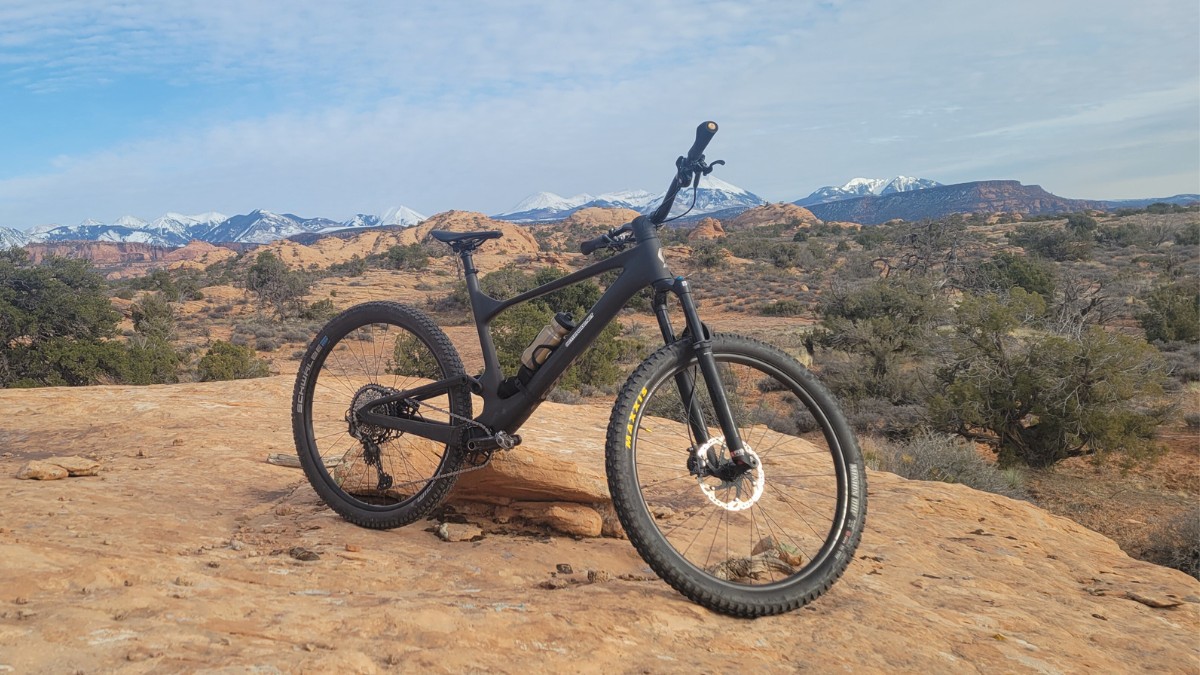
The Scott Spark 910
Observations on the Scott Spark 910
It’s a great bike, and it weighs 29 pounds with pedals, nearly 10 pounds lighter than the Canfield. I even set some PRs climbing on it, though not by as much time as I had hoped.
Lightweight isn’t always good. The Spark was much less stable and planted when descending. Lightweight and less travel are a plus on easy trails as they make them a little more challenging, keeping you engaged.
The Scott Spark vs my 910 Canfield Lithium
Riding as fast as on my Canfield top to bottom was challenging, even on relatively smooth trails, like Red Mountain Rush in Mesa, AZ! Watch this video:
If I could only have one bike, it would be my Canfield Lithium. The Lithium and I have had a lot of adventures, from bike parks to the steeps of Squamish to the chunk of South Mountain to the mellow but fun trails at 18 Road in Fruita. My Lithium can truly do it all!
Differences between the bikes
The biggest difference is probably the CBF suspension on the Canfield; it’s amazing. It eats bumps like a downhill bike, yet it has pop! You can pump and push against the pedals, making it playful and fast. Watch me ride lower Ahab on my Canfield Lithium:
What if you’re not an aggressive rider?
If you aren’t an aggressive rider and/or live in a place with smooth, flowy trails like Fruita, a Scott Spark 910 may be the ultimate bike for you. It is absolutely the best bike for smooth trails that I have ever ridden, yet still, it’s quite capable of riding black diamond trails.
You have to ride a little slower and, more precisely, on the Scott. You can’t quite attack rougher trails like on my Lithium, but it is a confident descender.
That’s my short take on “down-country” bikes vs enduro bikes. Hope this helps with choosing your ultimate mountain bike.
If you’ve done similar tests, let me know in the comments.
If you want to “nerd out” on my test read on to learn more about choosing your ultimate mountain bike
The Spark has similar geometry to my Canfield. They both have 500mm reach measurements (xl) and 76.7 seat tube angles. While the Lithium has a 64.5-degree head angle vs. 65.2 degrees on the Spark, (BB height and drop are way different due to the difference in suspension travel).
The first two things I noticed
It should be noted that after some test rides, I had to make a few changes to the Sparks’ build. The 2.4 Wicked Will tires roll fast but don’t have the traction I am used to, and the 120mm of travel in the rear and 130mm in front didn’t give me the compliance I was looking for.
Stem, bars, cranks and rotor
The stock 70mm stem felt long, and the 760mm wide flat bars felt low and narrow. In addition, the 175mm cranks hurt my knees, making pedaling awkward. Oh, and why they put a 180mm rotor on the front of an XL bike puzzled me. Most riders on XL frames are much heavier than those on small and medium frames, we need more stopping power.
Wheels and Tires
So, I did a lot of experimenting. I even put the wheelset of my Lithuim on the Spark to try hot-rod it. I figured the 3.0 front tire with 14 psi would help the Fox 34 smooth out the trail, but the fork still felt a little overwhelmed on rough trails at speed (as it should; it isn’t designed for them). The DD casing 2.5 minion DHF in the rear cornered much better than the 2.4 Wicked Will but rolled slower and added a lot of weight.
I replaced the front tire with a 2.6 Minion DHF, replaced the bars with an 810mm wide, 30mm rise Enve Bar, installed a 40mm stem and 203mm front rotor, and switched to 165mm cranks.
Hubs
This setup worked for a while, but after spending the last five years riding a silent, instant-engagement rear hub, I found the delayed engagement of the stock Syncros rear hub annoying. I would come out of a corner, stomp on the pedals, and almost go over the bars as nothing happened at first (as my body moved forward, expecting my bike to do the same).
Now I have Onyx rear hubs on all three of my bikes. I love the feel and quality of their hubs. They have instant engagement, are silent, fast-rolling, and last forever!
However, these changes did add .5 pounds, pumping the Spark up to 29 lbs vs. the Lithium, which has a heavier and more durable build at 38.4 lbs.
Testing them on trail
Finally, I used Strava for the tests but didn’t have the fitness to test each bike on the same day. On black and double Black descents it was no contest, the Canfield won by huge margins.
The bikes were nearly equal in Strava times on smooth black and blue trails. Even so, I felt smoother and more in control on the Canfield, while the Scott felt quicker on short uphills and flat pedally trail sections.
The “compare feature” on Strava matched what I felt. On the Canfield, I would pull ahead on the faster and rougher bits, and on the Scott, I would pull back time on short, steep climbs
Hardly scientific, but even after a month of riding only the Scott, I hopped on the Canfield and felt much more confident.
Please share this article with anyone you think may benefit and feel free to call or e-mail with any questions.
Cheers,
Gene

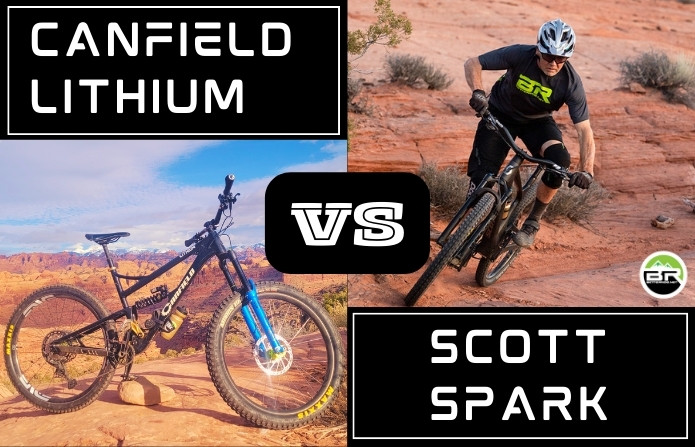
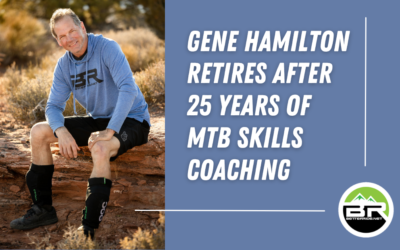
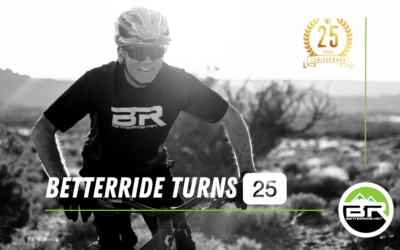
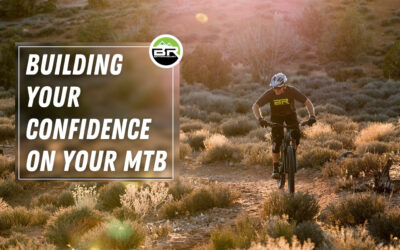
Howdy Gene,
After 40+ years of riding bikes in the mountains, a lot of what you say here is so true. My personal take on bikes is: If I can only afford one bike, I’ll take the longer and slacker bike every time. I’ll happily give up efficiency on easier trails for a bike that rips on descents. Fortunately I can afford a bike for each type of trail. My clear winner though is the bike a used at the clinic in December.
It has what are ideal numbers for me. 170 travel front and rear, 76 seat angle, 64-63 adjustable head angle, 460 reach. It works anywhere from Texas trails, to big Utah mountains, to Angel Fire and Spider Mt bike parks.
Hi James,
Exactly, 170mm travel and those angles work everywhere.
Cheers,
Gene
Hey James,
For sure! If I had to do it again I think I would of gotten a lighter and faster rolling wheel/tire setup for the Canfield and maybe an air shock for when I take it to smoother trails.
How would you compare these bikes to your previous bike (Scott Ransom)
Hi Don,
Interesting question. It was about 33 pounds so almost exactly in between in weight. I didn’t love the rear suspension on the Scott Ransom, it’s good but not great. The Canfield has a much better suspension for both climbing and descending. The CBF suspension climbs so well I rarely lock it out while on the Scott you had to lock it out (which does add to the complexity of riding the bike). On the descents I never think about the suspension on my Canfield, it just works well. On the Ransom a few times a run it would hang up on a square edge hit. Other than that the Ransom was pretty sweet. I wonder if the new Ransom has better suspension? It’s also rather pricy compared to the Canfield.
Cheers,
Gene
Hi Don,
The Canfield Lithium has better suspension, it pedals better and descend smoother. The Ransom was a great bike but definitely hung up on some square edged hits, the new Ransom looks interesting though … The Spark is like a mini Ransom, less travel but similar travel, it really needs the lockout when pedaling hard.